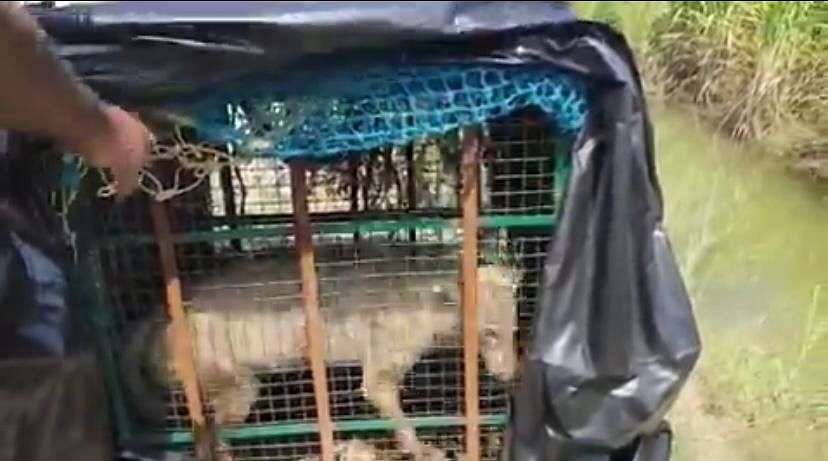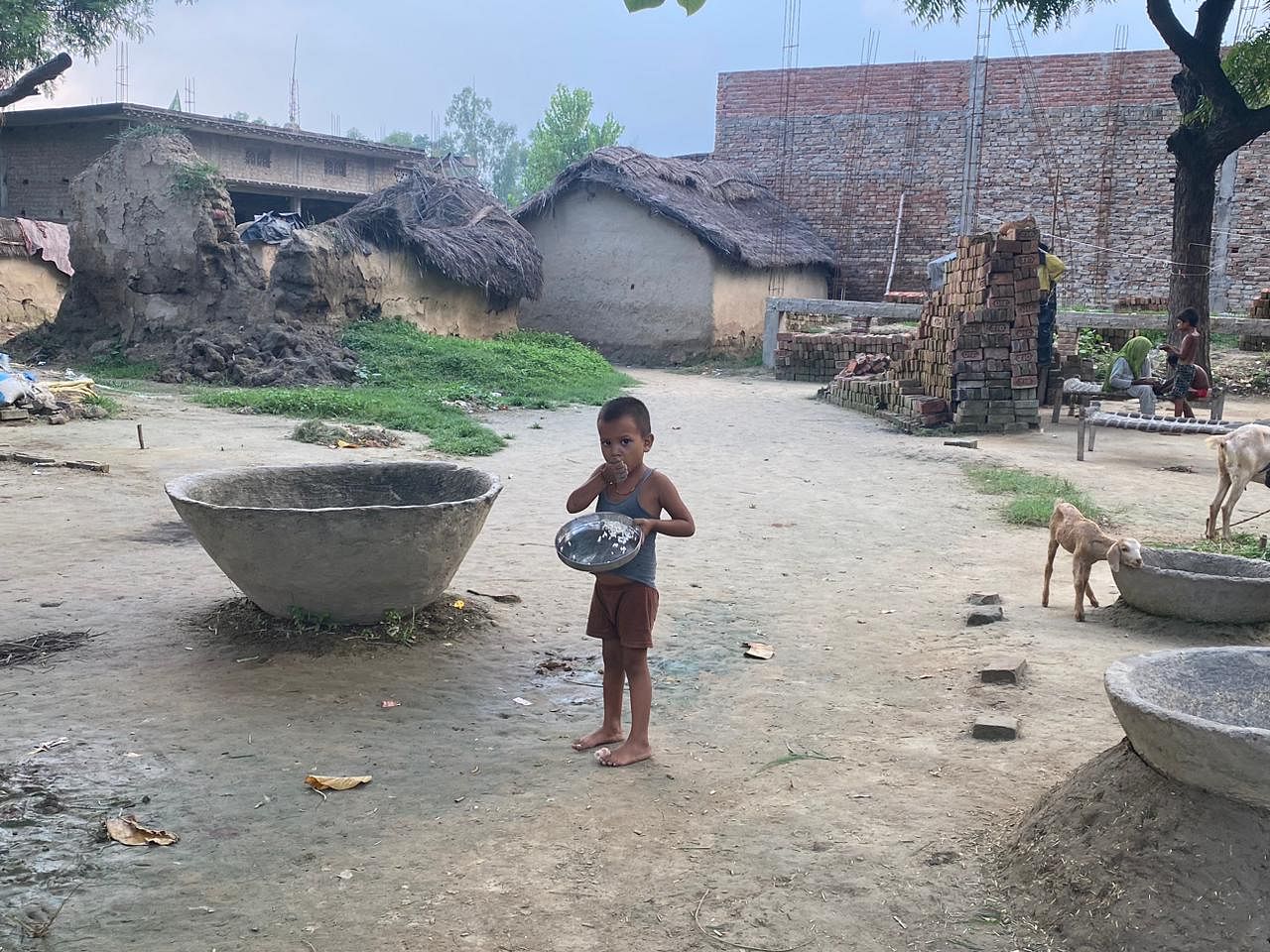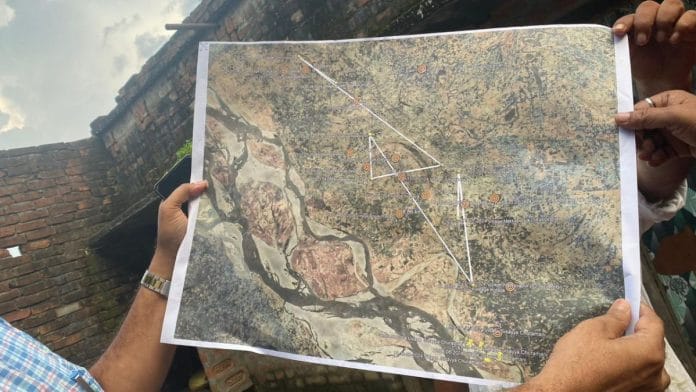Bahraich/Lucknow: Wolf attacks on villagers in Uttar Pradesh’s Bahraich district continue, even as the state government’s “Operation Bhediya” has been underway for a whole month. So far, 10 people, nine of them children, have been killed and about three dozen injured in the attacks attributed to wild wolves in the Mahasi tehsil.
Moreover, the answers to some key questions, like the exact number of wolves that have turned man-eaters, have remained elusive. According to senior forest department officials and wildlife experts, this is because of the lapses in the on-site investigation by the department and the Bahraich administration.
The forest department failed to conduct any DNA test of the faeces of the wolves caught by the officials, one of which died soon after it was captured and three others which are currently in the Lucknow and Gorakhpur zoos. The test could have helped in determining which of them had eaten human flesh. The animals were also not made to vomit.
Y.V. Jhala, veteran wildlife scientist and former dean of the Wildlife Institute of India (WII), told ThePrint that these are two ways to check what the animal has consumed.
Senior forest department officials confirmed that the animals were sent to the two zoos without any such tests being conducted. Additional Principal Chief Forest Conservator Renu Singh said that the tests were not conducted on any of the four wolves caught so far.
“The tests were not conducted. We will conduct them on the remaining wolves, when they are caught in future,” she told ThePrint.

Sanjay Pathak, chief conservator of forests (CCF), Dudhwa Tiger Reserve, who is one of ten senior Indian Forest Service (IFS) officers sent to Bahraich to oversee Operation Bhediya told ThePrint that such tests need to be conducted within 48 hours of the animal having consumed human flesh.
“The problem is that they have all gone to the zoo now, so the time for testing is over. The sample for the DNA test has to be collected as soon as an animal is caught. If the animal is caught after 48 hours of possible human flesh consumption, the test will reveal nothing. One can take the sample of the scat (animal poop) within 48 hours of consumption of human flesh,” he said.
Senior officers sent to Bahraich feel there were several slip-ups on the part of the forest department officials who led the operation in the initial stages. “There was no use of scientific approach. The first thing that officials should have done after catching the wolves is to make them vomit or take a sample of their faeces. None of that was done,” said one.
Further, several incidents of animal attacks have been attributed to wolves without any evidence, another senior IFS officer told ThePrint.
Also Read: ‘Operation Bhediya’ in UP, shoot-at-sight orders given for man-eating wolf as death toll rises to 10
Wolves blamed for attacks by other animals?
A 60-year-old man and his four-year-old grandson were attacked by an animal in the Lodhanpurwa hamlet of Yadavpur village in Bahraich district Friday. While the man and other villagers thought that animal was a wolf and beat it to death, forest department officials later concluded that it was a feral dog. The man and the child had been bitten on their legs.
“In the last attack, we immediately took the swab and concluded that the attacker was not a wolf but a feral dog. Several villagers said that the attacker was a wolf and urged forest department officials to term it so, but it turned out to be a feral dog,” a senior forest department official told ThePrint.
The incident has left the senior forest officers in Bahraich shocked.
“Indian wolf is the most primitive of species. If such attacks are encouraged, people may end up killing the wolves. We have only 3,000 wolves left in the country and this animal is the most important predator in the ecosystem. Its presence is necessary for the ecosystem to thrive,” another senior IFS officer supervising Operation Bhediya told ThePrint.
“An example is how introduction of wolves helped improve the Yellowstone National Park ecosystem in the US. The entire operation (Operation Bhediya) has been mishandled from the beginning and some are working to project other animal attacks as wolf attacks due to vested interests,” the officer added.
‘Revenge’ attacks by wolves?
In March this year, a pair of wolves—a female and a male—were caught by forest department officials and released in the Chakia forest range after two children were killed by wolves in two separate incidents in different villages.
Gyan Prakash Singh, former divisional forest officer at Katarniaghat Wildlife sanctuary, who is currently legal advisor to the Wildlife Trust of India (WTI), told ThePrint that the two wolves had begun attacking human children after the death of their pups, who were allegedly run over by a tractor. “It is possible that the same wolves have returned,” he said.
A similar incident, however, had taken place in July, WTI officials told ThePrint, adding that the spate of wolf attacks on children resumed soon after.
Field sociologist Shruti Chauhan said WTI had received information in July that a litter of three-four pups, possibly that of wolves or dogs, had been killed by a tractor in Mahasi.
“When our team reached the spot, we spoke to villagers, who confirmed that some pups, which looked like the progeny of wolves or jackals or a dog-like creature, had been killed. They were not sure about the species, but because this area has wolf dens and comprises the natural habitat of the animals, there is a possibility that the pups belonged to a wolf couple,” she said.
Soon after the incident was reported, a spate of wolf attacks on human children began across villages of Mahasi, Chauhan underlined.
“When human children started getting attacked, the news of the death of the pups was drowned. The wolves have a very strong sense of family, even stronger than humans. They don’t leave their old members behind. That is how they operate,” she said. “We are speculating that the attacks on humans could have been because of the killing of the litter, but we cannot confirm the same because there is no record of the pups.”
Revenge attacks, however, is abnormal behaviour for wolves, according to Chauhan. “A revenge attack is not normal for wolves. It is also possible that because of their natural habitat getting disturbed and shortage of prey animals, the wolves are attacking children for want of food.”

Shaheer Khan, an expert on wolves from WII, who is in Bahraich to study the attacks, said that scientifically, it is impossible to prove that wolves have a tendency to seek revenge for attacks on their offspring. “There have been reports that people had damaged the dens of the wolves back then and put some stones over it, but scientifically, one can never prove that wolves have a tendency to avenge attacks on their young,” he said.
“The reason why wolves are attacking children here seems to be the fact that scores of children defecate in the open in the early hours of the day. One or two of the wolves out of the pack of six may have confused a human child with a hare or deer species. When an animal successfully kills a human, it ultimately believes that killing a human is very easy,” Khan explained. “When such children defecate in the open, wolves can easily attack them. They slowly realise that attacking children is easiest.”
Chewed bone passed off as human bone?
Meanwhile, a chewed bone discovered in the post mortem of one of the wolves, which was captured and killed, was deemed a human bone by some forest department officials and those from the local administration.
“The wolf caught on 3 August was a man-eater, as concluded by the forest department. The post mortem report of the wolf had shown a bone inside the dead body, which was concluded to be a human bone,” Dr Sanjay Sharma, Bahraich chief medical officer told ThePrint.
Experts, however, said the discovery of the bone was insufficient to prove that the bone was indeed a human’s, and that it could belong to another animal, too.
“I found out that the post mortem report of the deceased wolf had revealed the presence of a chewed bone in its body. It could be the bone of an animal too. It cannot be concluded that it was a human bone until a DNA test is conducted,” Khan said.
Jhala, too, emphasised that there was no evidence to conclude that the bone belonged to a human and not a fellow animal. “Only a DNA test can prove that. The first lapse was the failure to get the faeces of the captured animals tested or to have the contents of their vomit tested. That could have helped identify the man-eater animals.”
(Edited by Mannat Chugh)
Also Read: Bahraich wolves preying on doorless village homes with no electricity. Children easy targets






